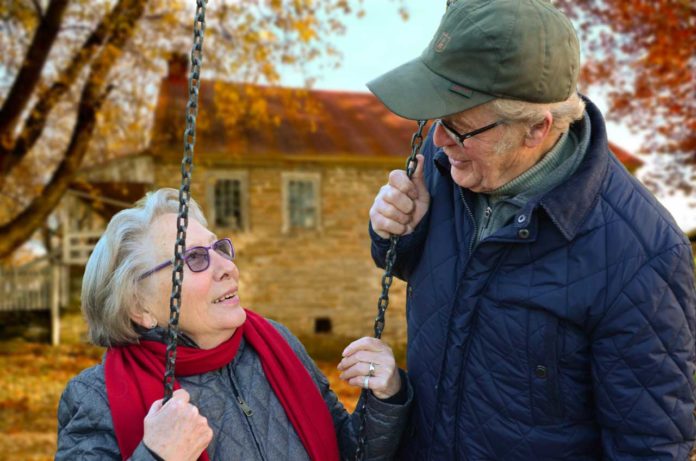The physical effects of aging on the body have been well documented. Similarly, the effect of aging on cognitive function has been extensively studied.
Social behaviors and emotional responses also change with age. Seniors spend more time volunteering and donate a larger proportion of their income to charity compared to younger adults. Both of these effects are stronger for religiously active older adults.
Age-varying neurochemical responses are the way to help explain seniors’ prosociality. Correlational and experimental studies of prosocial behaviors suggest oxytocin (OT) as a likely candidate. The release of OT is associated with empathic concern.
People whose brains release more of the neurochemical oxytocin are kinder to others and are more satisfied with their lives.
This is the finding of new research, published in Frontiers in Behavioral Neuroscience, that also discovered that oxytocin release increases with age, showing why, on average, people are more caring as they get older.
“The findings of our study are consistent with many religions and philosophies, where satisfaction with one’s life is enhanced by helping others,” reported first author Dr. Paul J Zak of Claremont Graduate University.
“Participants in our study who released the most oxytocin were more generous to charity when given the opportunity and performed many other helping behaviors. The change in oxytocin was also positively related to participants’ empathy, religious participation, and gratitude.”
Oxytocin
Oxytocin is a neurochemical widely known for its role in social attachment, interpersonal trust, and generosity. Zak and his colleagues wanted to understand if the release of oxytocin changed with age, as is found with some other neurochemicals that influence feelings and behaviors.
“We have previously shown a link between how kind and generous people are, known as prosocial behaviors, and the release of oxytocin,” said Zak. “Seniors spend more time volunteering and donate a larger proportion of their income to charity than do younger people, so we wanted to see if there was a neurochemical basis for these behaviors.”
Study Methodology
The researchers recruited 103 people for the study, ranging between the ages of 18 and 99.
Participants watched a 100-s video of a father describing his feelings about his 2-year-old son, who is dying from brain cancer. The video showed the child playing in the hospital while his father talked. The video had been shown to consistently stimulate OT release and elicit charitable donations. Since the goal is to induce an increase in oxytocin, no control stimulus was needed.
“Participants had the option to donate some of their earnings from the study to a childhood cancer charity, and this was used to measure their immediate prosocial behavior. We also collected data on their emotional states, to provide information on their overall satisfaction with life,” explained Zak.
“People who released the most oxytocin in the experiment were not only more generous to charity, but also performed many other helping behaviors. This is the first time a distinct change in oxytocin has been related to past prosocial behaviors,” reported Zak.
“We also found that the release of oxytocin increased with age and was positively associated with life satisfaction.”
“Our analysis has identified a likely neurochemical impetus for prosocial behavior that remains intact with age. The data showed that older participants experienced the largest change in OT in response to an emotional stimulus compared to other age groups. The correlation between neurochemical changes and four measures of prosocial actions suggest that OT impacts prosocial behaviors more strongly in aging adults for small increases in OT.” Study quotes.
The finding that is helping behaviors improve the quality of life is consistent with many faith traditions and philosophies. Serving others appears to prime the brain to release more oxytocin in a positive feedback loop of increased empathy and gratitude.
Futuristic view of the study
Zak would like to repeat this study in a more ethnically and geographically diverse sample of people to see if the findings hold for different cultures.
“We would also like to conduct a longer-term measurement of neurophysiology using noninvasive wearable technologies to see what specific activities raise people’s satisfaction with life,” he concluded.
Journal Reference
- Paul J. Zak, Ben Curry, Tyler Owen, and Jorge A. Barraza; Oxytocin Release Increases With Age and Is Associated With Life Satisfaction and Prosocial Behaviors. Frontiers in Behavioral Neuroscience, DOI: 10.3389/fnbeh.2022.846234
